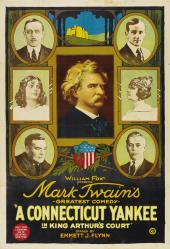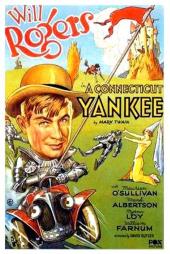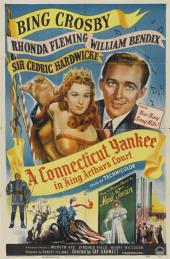Feature Film
A Connecticut Yankee in King Arthur’s Court
- by Bernard McConville, directed by Emmett J. Flynn
- (at movie theaters, USA, 14 March 1921)
We may never see this first movie adaptation of Twain’s story, since only three of the eight silent reels are known to still exist. The Yankee in this version is Martin Cavendish, who after reading Twain’s book, is knocked on the head by a burglar and slips into the time of Camelot. The result is high comedy coupled with a romantic interest and replete with motorcycles, explosions, Model T Fords, telephones, indoor plumbing, and lassos at a jousting tournament. As we did for Twain’s original, we classify the story as science fiction for the Yankee’s attempts at bringing modern technology to the distant past. And yes, the hero predicts a solar eclipse to save his life.
One review at Silent Hollywood indicates that the ending has Martin awakening from a dream and there is no explicit mention of actual time travel. With this in mind, we’re marking the time travel as debatable. Oh, and Mark Twain himself appears in the film, played by Karl Formes. —Michael Main
One review at Silent Hollywood indicates that the ending has Martin awakening from a dream and there is no explicit mention of actual time travel. With this in mind, we’re marking the time travel as debatable. Oh, and Mark Twain himself appears in the film, played by Karl Formes. —Michael Main
All this nobility stuff is bunk.



